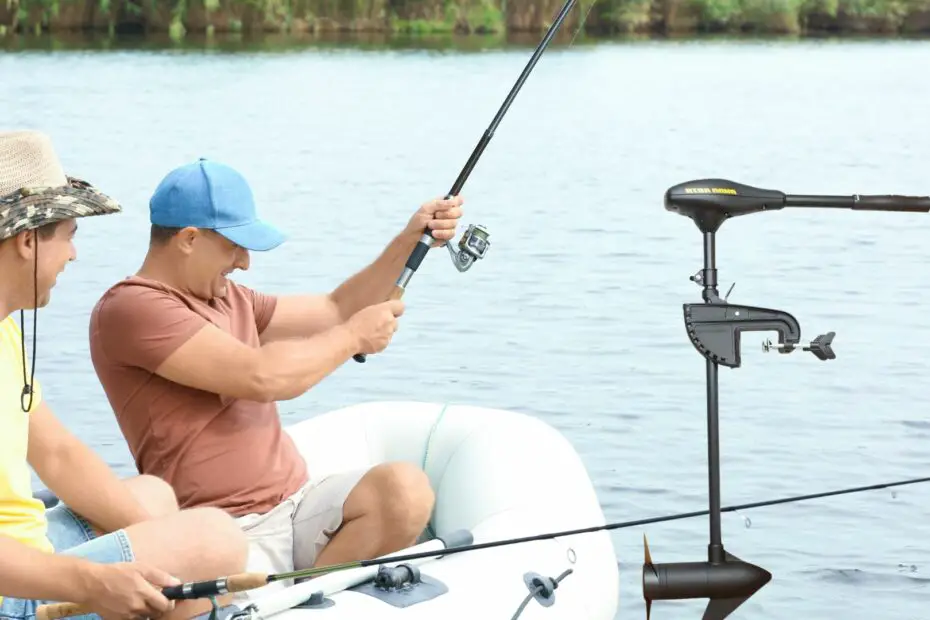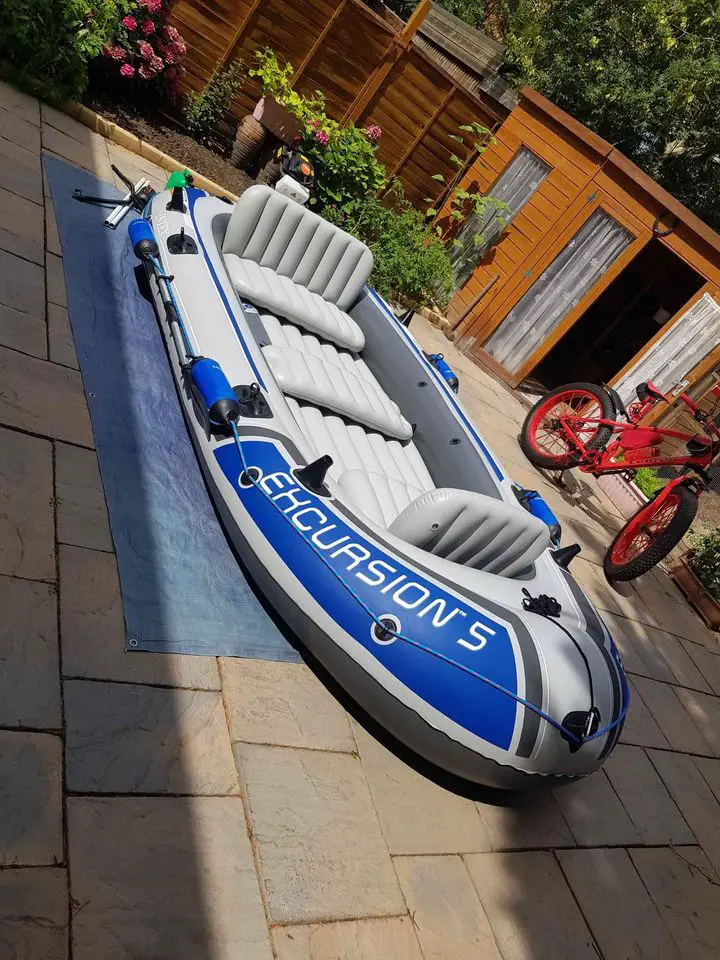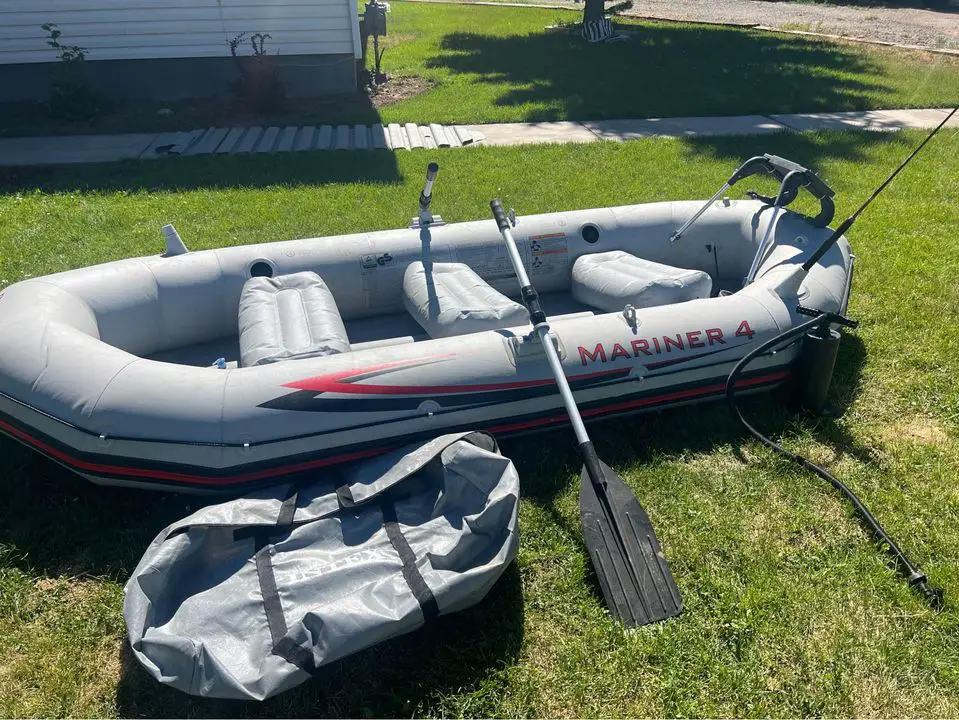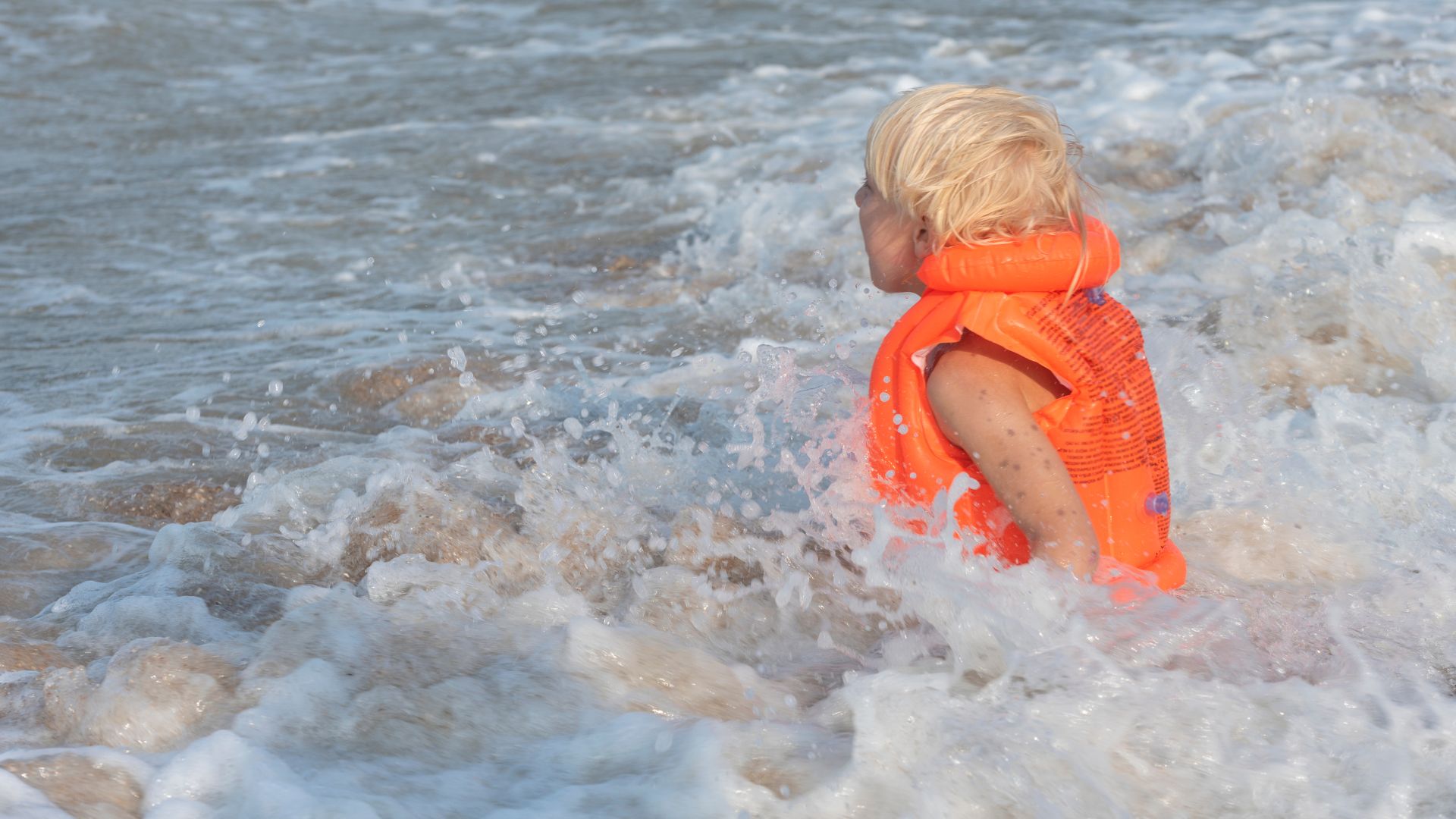In the realm of boating, the significance of a trolling motor, particularly for inflatable boats, cannot be overstated. A trolling motor is a self-contained unit that includes an electric motor, propeller, and controls, and is affixed to an angler’s boat, either at the bow or stern. Used for precise maneuvering, maintaining position, and slow cruising, a trolling motor is a vital component for anglers and boating enthusiasts who seek a controlled and enjoyable experience on the water.
When it comes to inflatable boats, the role of a trolling motor extends beyond convenience. These motors are integral for providing the necessary propulsion without the weight and bulk of traditional gasoline engines, making them ideal for the lightweight and versatile nature of inflatable boats. However, choosing the right size of a trolling motor is a nuanced decision influenced by various factors such as the boat’s size and weight, water conditions, and the specific needs of the boater.
This article aims to serve as a comprehensive guide in helping readers choose the most suitable trolling motor size for their inflatable boat. Through an in-depth exploration of the key factors that should influence this decision, the article will empower readers with the knowledge and confidence to make an informed choice, ensuring their boating experiences are both safe and enjoyable.
What size trolling motor do i need for my boat: Use our calculator to help you find out.
[trolling_motor_calculator]
Understanding Your Inflatable Boat
Before delving into the specifics of trolling motor sizes, it is essential to gain a thorough understanding of your inflatable boat, as this knowledge directly influences your choice of motor. Inflatable boats come in various types, each with distinct characteristics that affect their performance and motor needs.
Types of Inflatable Boats and Their Characteristics:
- Inflatable Dinghies: Compact and versatile, these are popular for short trips and tend to have a flat hull.
- Rigid Inflatable Boats (RIBs): Combining a rigid hull with inflatable sides, RIBs offer stability and are suitable for rougher waters.
- Inflatable Pontoon Boats: Known for their stability, these boats feature two large inflatable tubes and are ideal for fishing.
- Inflatable Kayaks: Designed for leisure and sports, these kayaks are streamlined for easy maneuvering in various water conditions.
Importance of Boat Size and Weight: The size and weight of your inflatable boat are crucial in determining the motor size. A larger, heavier boat requires a more powerful motor to ensure adequate propulsion and handling. Conversely, a smaller, lighter boat may be efficiently maneuvered with a less powerful motor. Understanding the weight capacity and dimensions of your boat is fundamental in matching it with an appropriate trolling motor.
Impact of Boat Usage on Motor Choice: The intended use of your inflatable boat significantly influences your choice of trolling motor. Consider the following scenarios:
- Fishing: Requires a motor that provides quiet operation and precise control to navigate fishing spots without disturbing the water.
- Cruising: For leisurely cruises, a motor with moderate power and longer battery life is ideal.
- Sports: Activities like water skiing demand a motor with high thrust and speed capabilities.
In summary, understanding the type, size, weight, and intended use of your inflatable boat is pivotal in selecting a trolling motor that aligns with your needs. By considering these factors, you can ensure that the motor you choose enhances your boating experience, providing the right balance of power, maneuverability, and efficiency.
Key Factors in Selecting Trolling Motor Size
When it comes to choosing the right size for a trolling motor, understanding thrust requirements is paramount. Thrust, measured in pounds (lbs), is the force that propels the boat through water. It’s a critical factor that determines how well your boat can maneuver and maintain position, especially against wind and current.
Explanation of Thrust and Its Significance:
- Thrust is essentially the motor’s power output that moves the boat.
- Adequate thrust is vital for efficient and effective boat control.
- Insufficient thrust can result in poor performance, especially in challenging conditions like strong currents or winds.
- Conversely, excessive thrust can lead to faster battery drainage and unnecessary power usage.
Calculating Required Thrust Based on Boat Weight and Conditions:
- General Rule of Thumb: A common guideline is to have a minimum of 2 pounds of thrust for every 100 pounds of fully loaded boat weight (including passengers, gear, and the boat itself).
- Consideration of Conditions:
- Calm Waters: If you primarily navigate in calm, still waters, the minimum thrust guideline may suffice.
- Rough Waters: For rougher conditions, such as strong currents or winds, you may need additional thrust. It’s advisable to consider a higher thrust rating to ensure adequate power and control.
- High Altitude: Water bodies at higher altitudes may also demand more thrust due to reduced water density.
- Type of Use:
- Fishing in Quiet Areas: If you use your boat for activities like fishing in tranquil areas, you might prioritize a motor that offers precise control over sheer power.
- Recreational Use in Varied Conditions: For general recreational use in a variety of conditions, a balance between power and efficiency is key.
Remember, the thrust calculation is a starting point. Other factors, like the boat’s hull design and your specific usage needs, should also be considered for an optimal choice.
In conclusion, understanding and calculating the required thrust is a crucial step in selecting the right trolling motor size for your inflatable boat. This ensures that the motor provides sufficient power for your specific needs and conditions, enhancing your boating experience with efficient and reliable performance.
Voltage and Power
Selecting the correct trolling motor involves not only understanding thrust but also comprehending the relationship between voltage, power requirements, and battery life. Trolling motors typically come in three voltage categories: 12V, 24V, and 36V. The choice among these options has significant implications for your boating experience.
Different Voltage Options and Their Implications:
- 12V Trolling Motors:
- Ideal for smaller boats and lighter use.
- These motors are more compact and require a single 12V battery, making them easier to install and manage.
- Best suited for short, leisurely trips or fishing in calm waters.
- 24V Trolling Motors:
- Designed for medium-sized boats or for boaters who require longer run times and more power.
- Require two 12V batteries connected in series.
- Offer a good balance between power and efficiency for more demanding conditions.
- 36V Trolling Motors:
- The choice for larger boats or challenging conditions that demand high thrust and extended use.
- Require three 12V batteries, necessitating more space and increasing the overall weight.
- Provide the greatest thrust and longest run time, ideal for heavy-duty use.
Power Requirements and Battery Choice/Duration:
- The selection of a trolling motor’s voltage impacts your battery setup. Higher voltage motors (24V or 36V) provide more power and longer duration but require multiple batteries, thus increasing weight and space requirements.
- The choice of batteries should not only be based on voltage but also on ampere-hour (Ah) rating. A higher Ah rating means the battery can deliver a set amount of current for a longer period.
- It’s important to ensure your battery setup can handle the estimated power usage of your trips. For example, a day-long fishing trip in variable conditions might necessitate a more robust battery setup compared to short, casual boating excursions.
- Additionally, consider the charging time and the practicality of charging multiple batteries, especially for frequent or long-duration use.
In essence, understanding the voltage requirements of a trolling motor and its implications on power and battery choice is essential. This knowledge enables boaters to make informed decisions that balance power needs with practical considerations like battery management and boat size.
C. Shaft Length Considerations
When outfitting an inflatable boat with a trolling motor, the importance of selecting the correct shaft length cannot be overstated. The shaft length plays a crucial role in ensuring optimal performance and safety. An improperly sized shaft can lead to inefficient operation and potential hazards.
Importance of Correct Shaft Length for Performance and Safety:
- Performance: The right shaft length ensures that the propeller is sufficiently submerged in water, providing efficient propulsion and maneuverability. If the shaft is too short, the motor may not reach deep enough, leading to cavitation (the formation of air bubbles), which decreases thrust and can damage the motor.
- Safety: A shaft that’s too long or too short can affect the boat’s balance and handling. In rough waters, an inadequately submerged propeller (due to a short shaft) can lose its grip on the water, affecting stability.
Guidelines for Measuring and Choosing the Right Shaft Length:
- Measuring Your Boat:
- Measure the distance from the mounting point of the trolling motor on the transom or bow to the waterline. This is best done when the boat is loaded as it would be during typical use.
- Consider any variations in load or conditions that might affect the boat’s sitting position in the water.
- General Shaft Length Recommendations:
- For Transom Mount: Add about 18 to 20 inches to your waterline measurement. This ensures that the motor’s shaft is long enough to submerge the propeller under varying conditions.
- For Bow Mount: The shaft should typically be longer than that for a transom mount due to the higher mounting point. Add about 20 to 25 inches to the waterline measurement.
- Consider Water Conditions:
- Calm Waters: Standard shaft lengths might be adequate.
- Rough Waters: Opt for a slightly longer shaft to ensure the propeller remains submerged even in choppy conditions.
- Check Manufacturer Recommendations:
- Many manufacturers provide guidelines or calculators to help determine the appropriate shaft length based on your boat type and usage.
Choosing the correct shaft length is not just a matter of efficiency; it’s a critical component for safe and effective boating. An appropriately sized shaft will significantly enhance your experience, providing stable, reliable, and efficient operation of your inflatable boat.
Additional Considerations
Water Environment
When selecting a trolling motor for an inflatable boat, the water environment where you will be operating plays a pivotal role. The primary distinction lies between freshwater and saltwater environments, each posing unique demands on the motor. Additionally, the impact of water currents and wind cannot be overlooked as they significantly influence motor size selection.
Differences in Motor Requirements for Freshwater vs Saltwater:
- Freshwater Motors:
- Constructed primarily for lakes, rivers, and streams.
- Typically, they have a protective coating to resist corrosion but are not as heavily fortified as saltwater motors.
- Often more affordable than their saltwater counterparts.
- Saltwater Motors:
- Engineered with corrosion-resistant materials and protective coatings to withstand the harsh saltwater environment.
- Feature more robust construction to handle the abrasive nature of saltwater and its potential for causing corrosion and damage.
- Essential for saltwater use; using a freshwater motor in saltwater can quickly lead to damage and void warranties.
Impact of Water Currents and Wind on Motor Size Selection:
- Strong Currents and Winds: In environments with strong currents or heavy winds, a more powerful motor (with higher thrust) is necessary to maintain control and stability. This might mean choosing a motor at the higher end of the recommended thrust range for your boat’s weight.
- Calm Conditions: In more placid waters, a motor with standard thrust power should suffice, allowing for efficient and effective navigation without the need for extra power.
It’s crucial to consider these environmental factors when choosing your trolling motor. Selecting a motor that is not only appropriate for the size and type of your inflatable boat but also tailored to the specific water conditions you anticipate encountering will ensure a safer and more enjoyable boating experience.
Control Features and Mounting Options
When equipping your inflatable boat with a trolling motor, the choice of control features and mounting options is as important as the motor’s power and thrust. These aspects influence the convenience, comfort, and functionality of your boating experience.
Types of Control Systems and Their Influence on Motor Choice:
- Hand Control:
- Involves a tiller that you manually operate to steer and control the motor.
- Ideal for smaller boats where the captain is close to the motor.
- Offers simplicity and direct control, but can be less comfortable for extended use.
- Foot Control:
- Uses a pedal to steer and control the speed of the motor.
- Allows hands-free operation, which is particularly advantageous for anglers needing to manage fishing gear.
- Can be more challenging to use in tight spaces due to the need for a pedal platform.
- Remote Control:
- Provides the ability to control the motor via a wireless remote.
- Offers the greatest flexibility and convenience, allowing control from anywhere on the boat.
- Typically found in more advanced and higher-end trolling motors.
Each control system has its benefits and drawbacks. Your choice will depend on your specific needs, preferences, and the size and layout of your inflatable boat.
Different Mounting Styles and Their Compatibility with Inflatable Boats:
- Transom Mount:
- The most common mounting style for small to medium-sized boats, including many inflatable models.
- Attaches to the back (transom) of the boat and is easy to install and remove.
- Ideal for flat-bottomed inflatables and smaller craft.
- Bow Mount:
- Typically used on larger boats and offers more precise control.
- Requires a sturdy mounting area at the front of the boat, which may not be available or suitable for all inflatable boats.
- Best suited for larger, rigid inflatable boats (RIBs) with a solid bow structure.
- Engine Mount:
- Mounts on the cavitation plate of the boat’s main outboard engine.
- Not typically used for inflatable boats, more common in traditional boats with permanent outboard engines.
Selecting the right control system and mounting option for your trolling motor will enhance your overall boating experience. It’s essential to consider the size and type of your inflatable boat, your typical activities, and your personal preferences when making these choices.
Budget and Brand Preferences
When selecting a trolling motor for your inflatable boat, balancing the cost with the desired quality and performance is a key consideration. Additionally, brand preferences often play a significant role, as different brands offer unique features and reputations for reliability and customer service.
Balancing Cost with Quality and Performance:
- Budget Constraints: It’s important to set a realistic budget that reflects your boating needs. While higher-priced models often offer advanced features and greater power, there are also cost-effective options that provide good quality and reliability.
- Performance Needs: Consider the specific requirements of your boating activities. If you frequently boat in challenging conditions or for extended periods, investing in a higher-end motor might be worthwhile.
- Long-Term Value: Cheaper models might save money upfront but could incur more maintenance costs or need to be replaced sooner. Conversely, more expensive models might offer better long-term value through durability and advanced features.
Overview of Popular Trolling Motor Brands and Their Features:
- Minn Kota:
- Renowned for reliability and innovative features.
- Offers a wide range of models suitable for different boat sizes and water conditions.
- Known for advanced options like GPS-based autopilot systems and wireless control.
- MotorGuide:
- Well-respected brand known for durability and performance.
- Provides a variety of models, including options specifically designed for saltwater.
- Features include intuitive control systems and efficient power usage.
- Newport Vessels:
- Offers competitively priced models ideal for casual or beginner boaters.
- Known for their ease of use and straightforward design.
- Good option for those who need a reliable motor without advanced tech features.
- Haswing:
- Emerging brand offering innovative designs.
- Known for lightweight and energy-efficient models.
- Some models come with features like wireless control and variable speed options.
Each brand has its unique strengths, and the best choice depends on your specific needs, preferences, and budget. It’s advisable to research and read reviews to understand the performance and reliability of different brands and models.
Tips for Optimizing Trolling Motor Performance
To maximize the efficiency and lifespan of your trolling motor, certain practices and considerations are essential. Focusing on regular maintenance, efficient battery usage, and adapting to varying conditions and boat loads can significantly enhance your motor’s performance and reliability.
Regular Maintenance and Care:
- Routine Inspections: Regularly check the motor for any signs of wear, damage, or loose connections. Pay special attention to the propeller and shaft.
- Cleaning: After each use, especially in saltwater, rinse the motor with fresh water to prevent corrosion and buildup of debris.
- Propeller Care: Clear any tangled weeds or debris from the propeller. Also, check for nicks or damage that can affect efficiency.
- Storage: When not in use, store the motor in a dry, protected space to prevent exposure to harsh weather conditions.
Strategies for Efficient Battery Usage:
- Proper Charging: Always fully charge the batteries before a trip and use a high-quality charger. Avoid overcharging, which can reduce battery life.
- Battery Monitoring: Regularly check the battery’s voltage and condition. Replace batteries that no longer hold a full charge.
- Variable Speeds: Utilize variable speed settings if available, as they are more energy-efficient than fixed-speed motors.
- Conservative Use: Be mindful of power usage during your trip. Using the motor at lower speeds when possible can conserve battery life.
Adapting to Changing Conditions and Boat Load:
- Adjusting to Weather and Water Conditions: Be prepared to adjust the motor’s thrust and direction based on wind and current changes.
- Load Distribution: Ensure the boat is evenly loaded to maintain optimal balance and motor efficiency.
- Shaft Length Adjustment: If your motor allows, adjust the shaft depth based on water conditions for better propulsion and control.
- Motor Tilting: In shallow waters, tilting the motor can prevent damage to the propeller and ensure better navigation.
Implementing these tips will not only enhance your immediate boating experience but also contribute to the longevity and sustained performance of your trolling motor. Regular care, efficient battery management, and adaptability to varying conditions are key to getting the most out of your investment.
Case Studies and Examples
To provide practical insights into the selection and use of trolling motors for inflatable boats, let’s explore real-world examples. These case studies illustrate how different boats can be optimally paired with specific trolling motor setups, and offer a comparative analysis of how various motor sizes perform under different conditions.
Case Study 1: The Weekend Angler
- Boat Type: Small Inflatable Fishing Dinghy
- Motor Setup: 12V, 30-pound thrust trolling motor with a 30-inch shaft.
- Scenario: Used for weekend fishing trips in calm, freshwater lakes. The lightweight motor provides sufficient thrust for maneuvering around fishing spots and is easy to transport and set up.
- Analysis: The 12V motor is ideal for short, leisurely trips. Its power is adequate for the boat’s size and the calm conditions, ensuring efficient and quiet operation for fishing.
Case Study 2: Coastal Explorer
- Boat Type: Medium-Sized Rigid Inflatable Boat (RIB)
- Motor Setup: 24V, 70-pound thrust trolling motor with a 42-inch shaft.
- Scenario: Utilized for coastal exploration and occasional fishing in both calm and moderately rough waters.
- Analysis: The 24V system offers a balance of power and duration, suitable for longer trips and varied water conditions. The higher thrust handles coastal currents well, while the longer shaft ensures consistent propulsion in different water depths.
Case Study 3: Adventure Enthusiast
- Boat Type: Large Inflatable Pontoon
- Motor Setup: 36V, 100-pound thrust trolling motor with a 52-inch shaft.
- Scenario: Designed for adventure trips involving water sports and cruising on larger lakes and rivers with varying conditions.
- Analysis: The 36V motor provides high thrust, essential for the larger boat and diverse activities. It ensures smooth operation in both calm and challenging environments, offering extended use with robust battery setup.
These case studies demonstrate the importance of matching the trolling motor’s size and power to the specific type of inflatable boat and its intended use. By considering factors like boat size, water conditions, and activity type, boaters can select a motor setup that offers optimal performance, safety, and enjoyment.
Conclusion about What Size Trolling Motor For Inflatable Boat
In this comprehensive guide, we have navigated through the crucial aspects of selecting the right trolling motor size for an inflatable boat. To encapsulate the key takeaways:
- Understanding Your Boat: Recognize the type, size, and weight of your inflatable boat as these factors are fundamental in determining the appropriate trolling motor.
- Thrust Requirements: Consider the thrust needed based on your boat’s weight and the water conditions you expect to encounter.
- Voltage and Power Considerations: Choose the right voltage (12V, 24V, or 36V) based on the size of your boat and your usage needs, balancing power requirements with battery considerations.
- Shaft Length: Ensure the shaft length is compatible with your boat’s mounting position and water conditions for optimal performance and safety.
- Water Environment: Factor in the differences between freshwater and saltwater environments, and how currents and wind impact your motor size choice.
- Control Features and Mounting Options: Select a control system (hand, foot, remote) and mounting style (transom or bow) that align with your boat’s design and your personal preferences.
- Budget and Brand Preferences: Balance cost with quality and performance needs, considering different brands and their unique offerings.
- Optimizing Performance: Regular maintenance, efficient battery usage, and adaptability to changing conditions and loads are key for optimal motor performance.
- Real-World Applications: Refer to case studies and examples to understand how these factors play out in practical scenarios.
As you embark on the journey of selecting a trolling motor, it’s crucial to tailor your choice to your personal needs and the specific characteristics of your boat. While this guide provides a foundational understanding, further research and consultation with boating experts can offer additional insights tailored to your unique situation.
In conclusion, the right trolling motor can transform your inflatable boat experience, providing you with the power, control, and efficiency needed for your aquatic adventures. By thoughtfully considering the aspects outlined in this guide, you are well-equipped to make an informed decision that enhances your time on the water.




